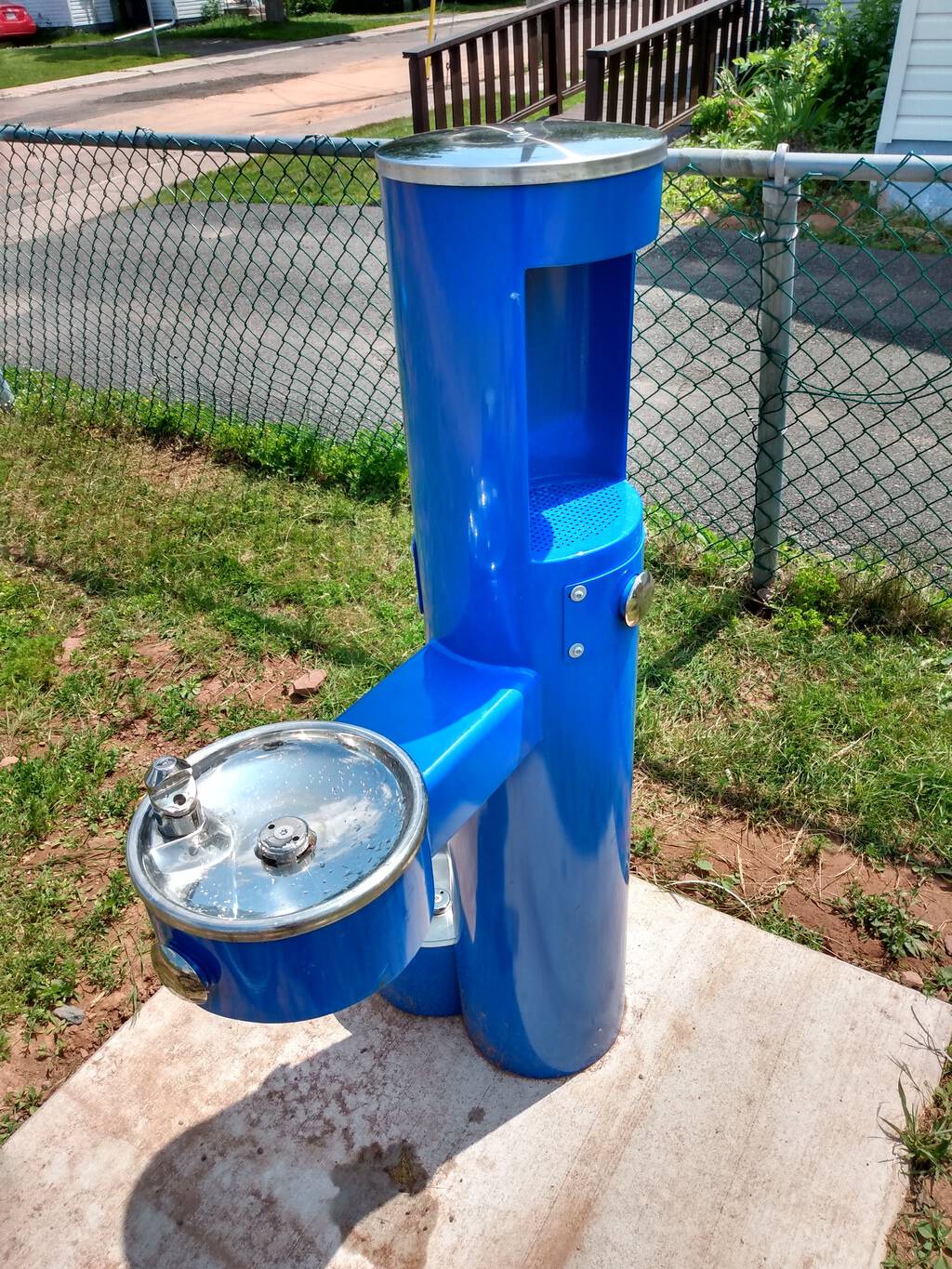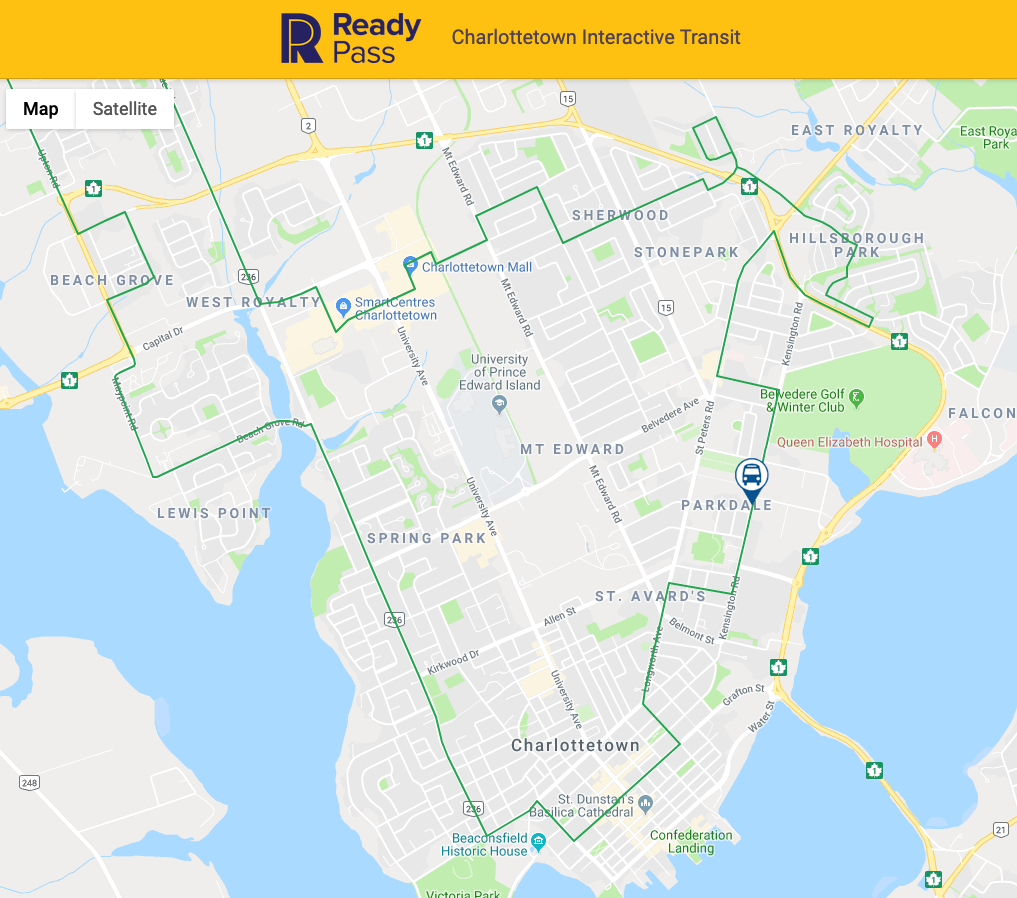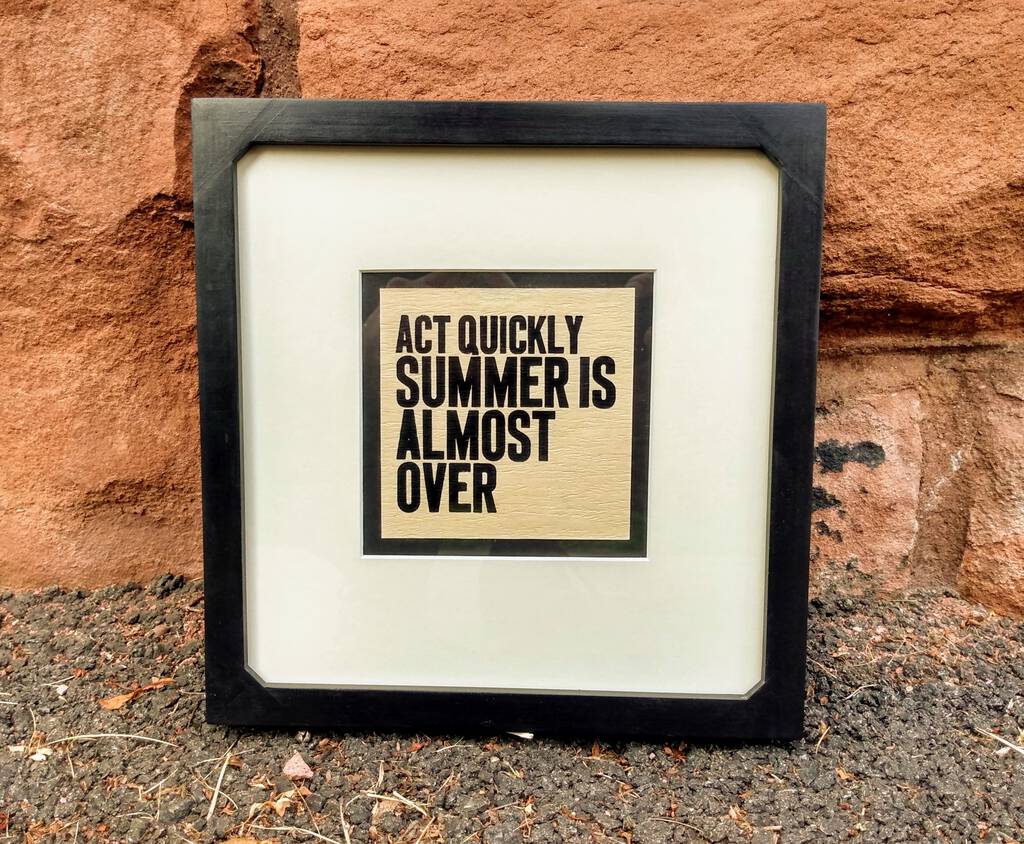I expect that the cadence of the reading of this blog does not lend itself to last minute notices of things, but just in case:
- It’s Pen Night tonight and I’m hosting at my print shop in St. Paul’s Parish Hall, 101 Prince Street at 7:00 p.m. If you’re curious and/or passionate about fountain pens and—one night only!—want to see my letterpress in action, consider yourself invited.
- It’s Free Root Beer Day at A&W. Go to A&W and they’ll give you a free root beer.
That is all.
In the April 2019 provincial general election, all four of the political parties on Prince Edward Island had planks in their platforms related to electric vehicles.
The PC Party pledged to “develop a solar energy rebate and electric vehicle incentive program” and to “add more electric vehicles to the government fleet as replacements are required.” The Green Party to “develop a program to support the installation of electric vehicle chargers in homes and workplace,” to “create a purchase incentive for electric vehicles,” and to “transition the provincial fleet to electric vehicles.” The Liberal Party promised to “invest in new public electric vehicle charging stations and provide tax rebates for the purchase and installation of home charging stations” and the NDP to offer “increased incentives to encourage people to purchase electric or other low-pollution vehicles.”
All of which raises the question: how many electric vehicles are there on Prince Edward Island right now?
I asked the Registrar of Motor Vehicles, and here are the counts, by fuel type, for calendar year 2019 to date:
| FUEL | COUNT | PER CENT |
|---|---|---|
| Gas/Propane | 2 | 0.00% |
| Gas/Natural Gas | 3 | 0.00% |
| Butane | 3 | 0.00% |
| PHEV (Plugin Hybrid Electric) | 7 | 0.01% |
| Propane | 10 | 0.01% |
| Gas/Alcohol | 17 | 0.02% |
| Electric | 33 | 0.05% |
| Diesel/Butane | 65 | 0.09% |
| Other | 110 | 0.15% |
| Hybrid - Electric/Gas | 403 | 0.56% |
| Diesel | 4,708 | 6.55% |
| Gas | 66,511 | 92.54% |
| TOTAL | 71,872 | 100.00% |
Aggregated by fuel technology–fossil fuel (gas, diesel, butane, etc.), hybrid (like a Toyota Prius, which doesn’t plug-in, and a Kia Nero, which does) and battery electric (like a Tesla, Nissan LEAF or Chevy Bolt), the dominance of fossil-fuel-powered vehicles on the Island is ”why even bother making a pie chart” clear:
| FUEL | COUNT |
|---|---|
| Fossil Fuel | 71,429 |
| Hybrid | 410 |
| Electric | 33 |
I’m pretty sure I know personally at least a third of the electric vehicle owners on Prince Edward Island.
The province’s Climate Change Action Plan–which is actual policy, not platform–has two actions related to electric vehicle adoption:
12. Government will design and install a province-wide electric vehicle charging network to meet the needs of both residents and visitors to Prince Edward Island.
14. Government will increase the use of electric vehicles in its light-duty vehicle fleet.
That plan commits Islanders to lowering our carbon dioxide equivalent emissions from 1.8 megatonnes per year to 1.4 megatonnes per year; this has been further amended to 1.2 megatonnes per year
So, in other words, we have 11 years to stop emitting 600,000 tonnes of carbon dioxide.
These two Climate Action Plan moves related to electric vehicles were to be responsible for 20,000 tonnes of that; that’s 5% under the original targets, so under the new target we’ll need to increase that to 30,000 tonnes.
According to the EPA, the typical passenger vehicle emits 4.6 tonnes of carbon dioxide per year, meaning that our commitment, if it were to come only from electric vehicle adoption (and generously assuming 100% zero carbon charging), will require 6,521 zero-emission vehicles on the road by 2030.
Right now we have 33.
There was no electric vehicle incentive program announced in the June 25, 2019 Provincial Budget.
On July 11, 2019 there was an exchange between the Hon. Peter Bevan-Baker and Hon. Darlene Compton in the Legislative Assembly surrounding a question by Bevan-Baker about government investment from fossil fuels:
Government funds divest from fossil fuels
A question to the minister: Will the minister commit to ensuring that all provincial government funds divest from fossil fuels?
Ms. Compton: Thank you, Mr. Speaker. I will not commit to that, unless you’re willing to drive a bicycle to work every day. I mean, we have to have fossil fuels. It’s as simple as that.
Ms. Compton: Everyone in this place, except for maybe the hon. Minister of Environment, Water and Climate Change, have fossil fuel vehicles, so it’s pretty hard for me to say that we could do that when everyone in this place is driving a vehicle that needs a fossil fuel.
Leader of the Opposition: Thank you, Mr. Speaker. I should perhaps clarify this is not about the personal choices we make. Indeed, I own a fossil fuel car as well. −
Leader of the Opposition: It’s about the value of those investments and what the potential future value will be as more and more fossil fuel investments become stranded assets.
There are a number of places, both jurisdictional and private companies that are divesting in fossil fuels strictly for financial reasons. I’m not talking about any sort of ethical issue here at all, although there may be something attached to that. I’m talking purely from a financial point-of-view for the wellbeing of the finances of this province.
The province invests a significant amount of money and these investments have an influence on developments within and even beyond this province, private prisons and fossil fuels are just two examples of investment practices that are not socially or environmentally responsible, and increasingly acceptable.
A question to the minister: Does the province have a policy to ensure its investments are done in socially and environmentally responsible manners?
Ms. Compton: Thank you, Mr. Speaker. I cannot say a definite yes to that, but I would be assuming that we would have looked at ethical reasons. I never really thought of fossil fuels as being something that’s unethical, but I guess we have to change the lens that we look through. It’s very hypocritical for all of us to say we’re going to say ‘no’ to everything involving fossil fuels when we’re all still using fossil fuels on a daily basis.
Leader of the Opposition: Thank you, Mr. Speaker. Clearly, I don’t think I stated that there was anything unethical about the use of fossil fuels, indeed I own a car. Hybrid car, but it’s still a car and it burns gas.
This was an unsatisfying exchange for several reasons:
- Bevan-Baker was asking a question on divestment from fossil fuels for reasons not directly related to their role in climate change; in essence he was suggesting that investing in fossil fuels is a bad investment because the bottom is going to fall out of the fossil fuel market, and the investments will lose value. But then, in the follow-up, things got tangled up with social responsibility, which is an entirely different issue. The effect of the question was thus blunted.
- Compton’s “unless you’re willing to drive a bicycle to work every day” comment was unhelpful in a discussion about divestment; to suggest that until we achieve individual net zero we cannot take collective action is disquieting to hear from the person charged with managing the province’s finances.
- Both Compton and Bevan-Baker appeared to initially be willing to admit that our use of fossil fuels is unethical, but both backed away from this. That is unfortunate: there’s a clear case to be made for the continued use of fossil fuels to be considered thus. It is possible to label something as unethical and to also act unethically; the two are not incompatible. Unfortunate, yes. Hypocritical, perhaps. But we cannot reserve “unethical” to describe actions only once we’ve stopped taking them.
- Investment in detention camps is something to be examined, but invoking this example, in this exchange, was another unfortunate distraction.
Put all this together, and a clear opportunity for important action on fossil fuel divestment was missed by both sides.
The dishwasher wasn’t draining.
I methodically (read: in a random, chaotic, increasingly raging fashion) tracked the clog to a tiny piece of plastic that had found its way into the drain near the sink.
I did not, I’m happy to report, break the dishwasher.
Indeed, I learned a lot about how the dishwasher works, and how it’s installed, something that had previously been locked in the “black box that makes dishes clean” realm.
This is good, as a broken dishwasher can plunge our household into despair.
Also good for my psyche, which has been sending me dreams about intractable infrastructure issues for the last week.
There’s this standard, which seems mostly ignored by mostly everyone, called USB On-The-Go, that allows mobile phones and tablets to connect to USB peripherals like flash drives, keyboards and mice.
It turns out that my Moto G7 Play Android phone has support for this standard. I bought a UGREEN USB C OTG Cable Adapter from Amazon1 for $8.99 to try this out. And it worked!
Here’s a little video of me using my Microsoft Sculpt Ergonomic Keyboard with my phone: I plugged the keyboard’s wireless dongle into the OTG cable, the OTG cable into the USB C port on the phone, opened up my email client, and started typing. The phone automatically recognized the keyboard; I didn’t need to configure it or set anything up.
I also tried the OTG cable with my Apple Mighty Mouse, and with a USB flash drive, and both worked as expected.
I hate typing on the tiny glass keyboard of my phone, so this is a good way for me to try out the idea of getting a Bluetooth portable keyboard to allow for typing-on-the-road.
I’m also interested in seeing whether I could plug the OTG cable (likely with a male-to-male USB A adapter) into one of the scanning-photocopiers at Robertson Library and thus gain the ability to “scan to my phone.”
1. Not an affiliate link.
I took a cycle out Riverside Drive and into the Hillsborough Hospital grounds and back tonight.
On the return journey I stopped to make a sketch of the Energy from Waste Plant; while I was sitting there, on a stoop in front of a storage trailer, Darcie Lanthier, among other things our federal Green Party candidate for Charlottetown, pulled up on her own (electric pedal-assist) bicycle. We ended up chatting about a number of things. In the most unlikely of places.
By the way, the Hillsborough River Cycle Path makes for a lovely after-supper bicycle route in the summertime. If you’re more ambitious, you can connect with the Hillsborough Park Cycle Path, the Riverside Estates Connector and the East Royalty Cycle Trails to get all the way out into the heart of East Royalty.
Indeed, with all the talk of hellish traffic from East Royalty into town, perhaps the wonders of 23 minute cycle ride along the river is should considered a viable alternative to building more capacity for cars?

The City of Charlottetown has recently installed drinking water fountains in Orlebar Park, Connaught Square and at the Dog Fun Park. The fountains are striking, and have novel water-bottle filling and dog-watering features. I have become a regular customer of them when cycling about town.

Something that might have escaped your attention is that, in addition to having a mobile app, T3 Transit also provides real-time bus location information on the web.
Here, for example, is a screen shot of the Route № 2, as I type, traveling through Parkdale. I’m about to catch this very bus, in front of the Polyclinic, and knowing when it’s time to walk over to the stop is a huge time (and pressure) saver.
(That said, I have not clicked “Save” on this post until now, an hour later, as I realized that the bus was getting very near; it not for a daring dash across traffic, I would have missed it).

In addition to being a talented visual artist, Stephen B. MacInnis is also a talented framer-of-things, and when he casually mentioned to me, in a conversation at the Farmers’ Market, that he picks up and delivers, that was enough to help me overcome my framing friction and to engage him to frame a number of pieces.
I’m incredibly pleased with the results. Here is one of the three he framed, one of the ACT QUICKLY SUMMER IS ALMOST OVER series from 2013. Perfectly time for the period of July when this advise must be seriously heeded.

Stephen can frame your things too. And he picks up and delivers.

 I am
I am